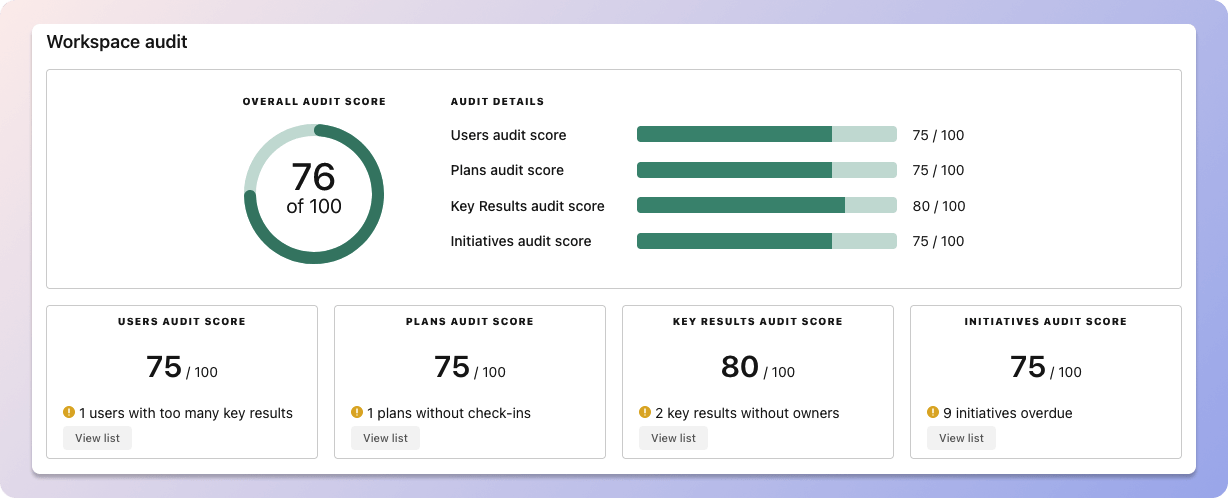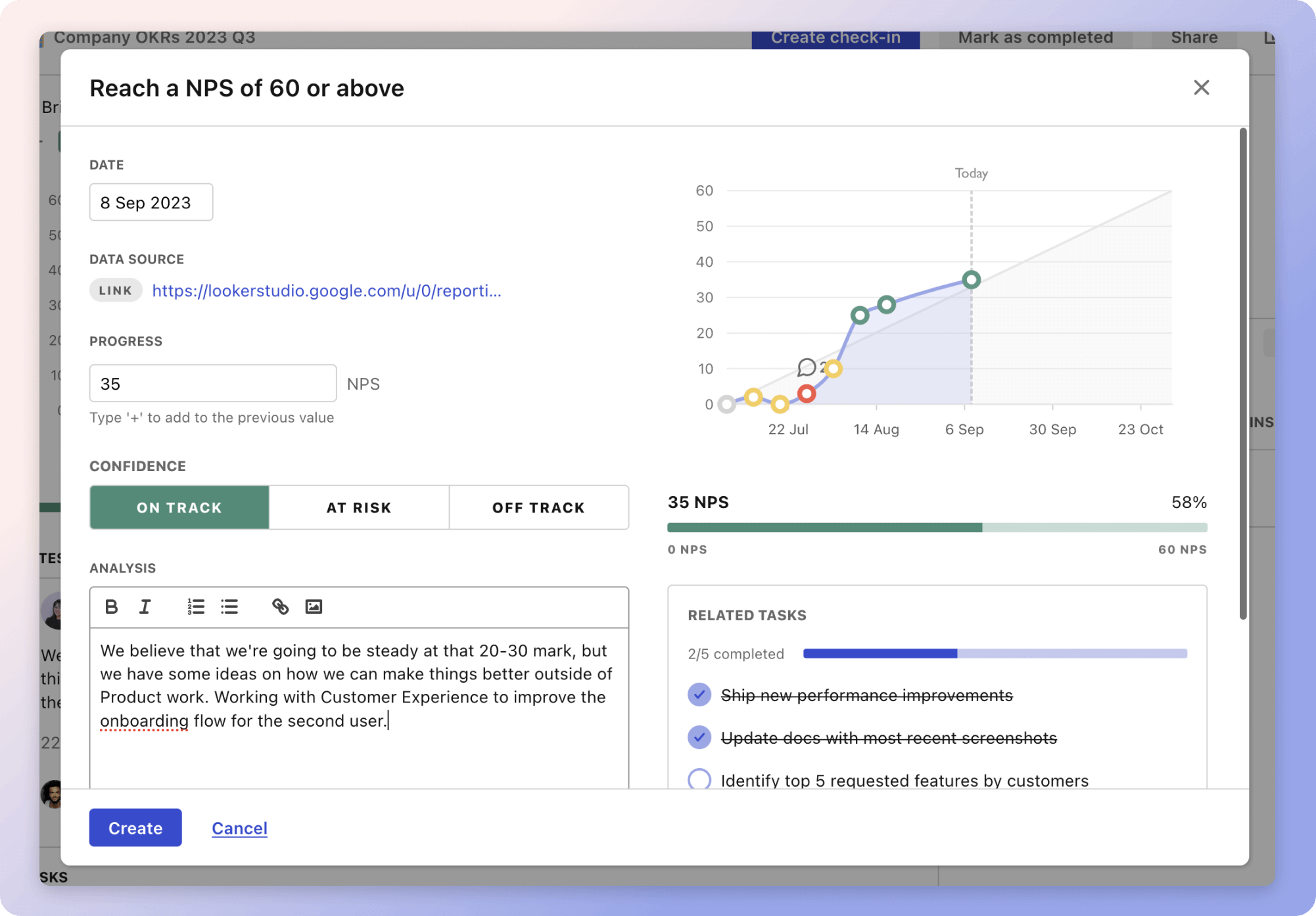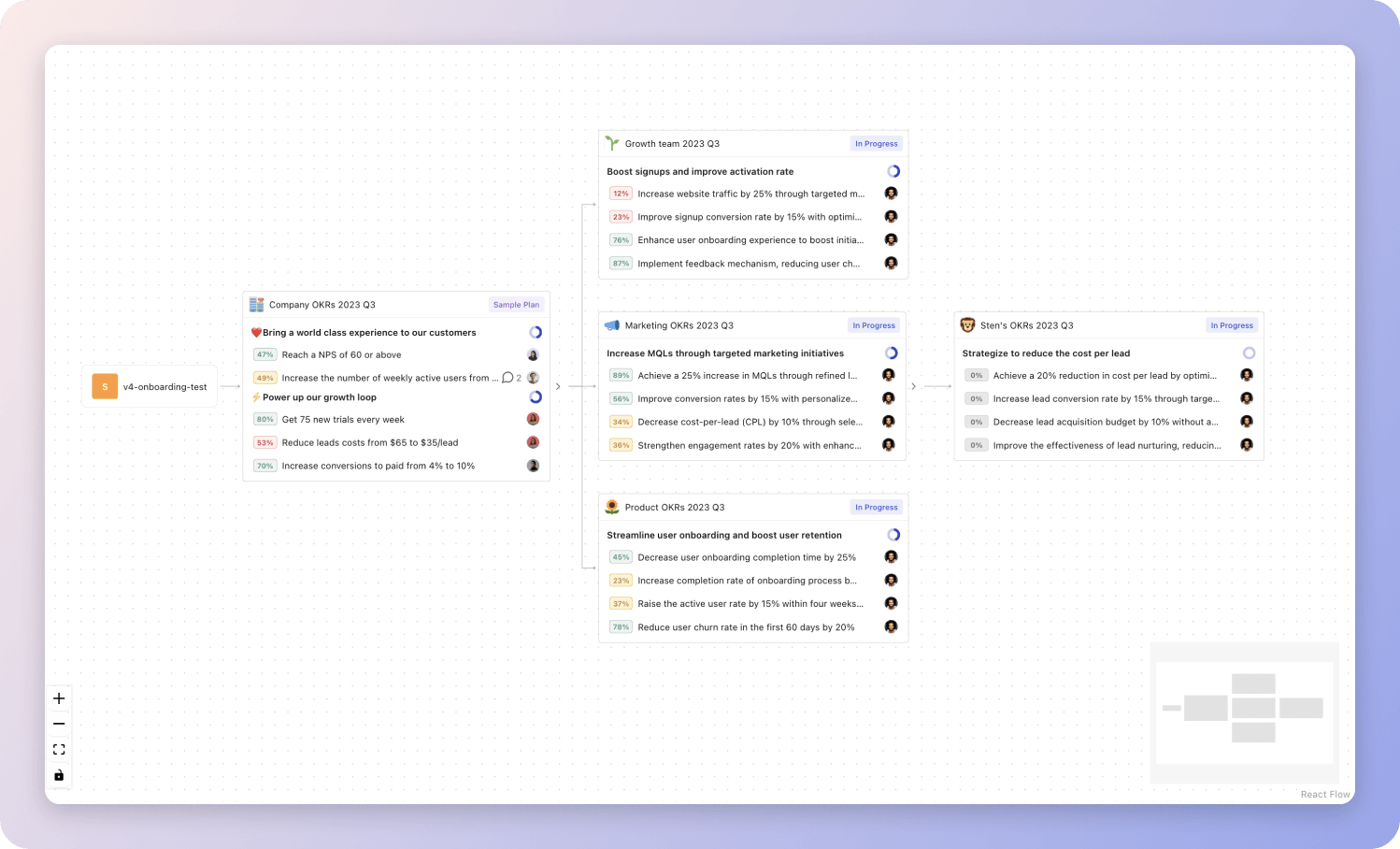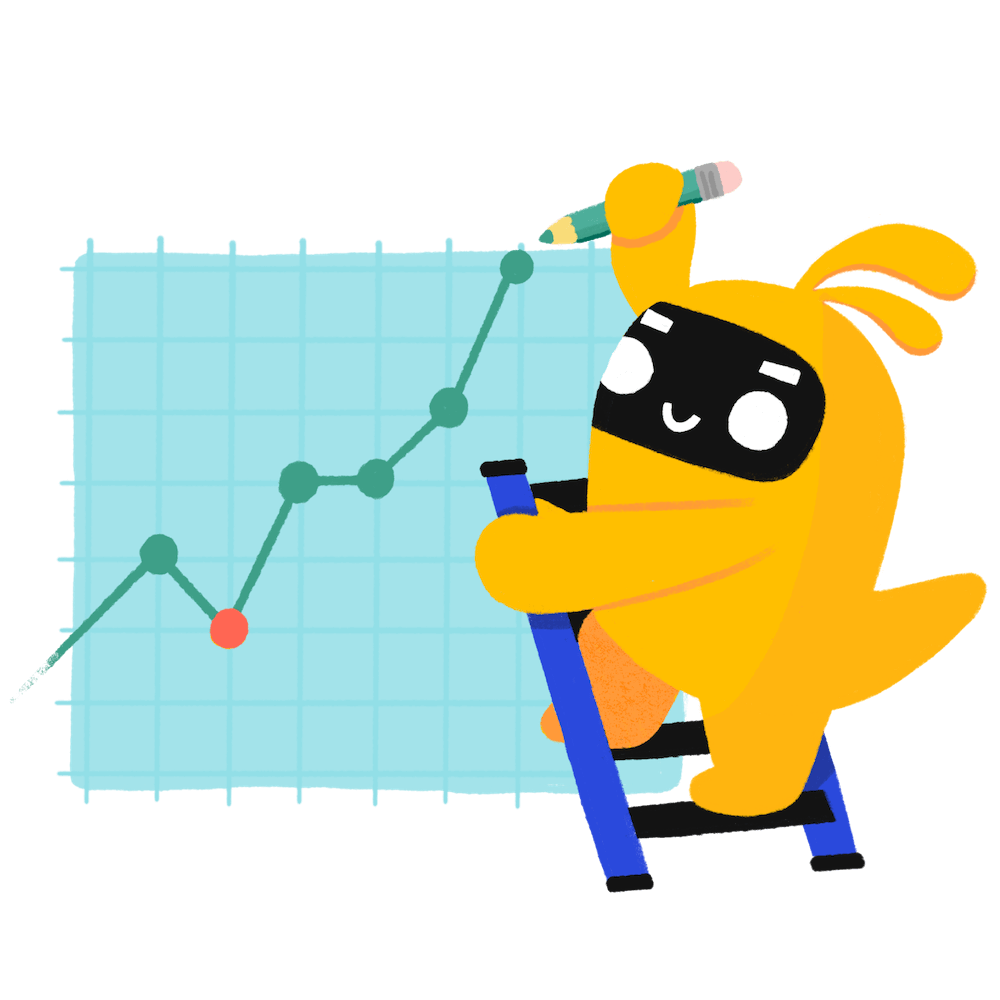3 customisable OKR examples for Design Innovation
What are Design Innovation OKRs?
The OKR acronym stands for Objectives and Key Results. It's a goal-setting framework that was introduced at Intel by Andy Grove in the 70s, and it became popular after John Doerr introduced it to Google in the 90s. OKRs helps teams has a shared language to set ambitious goals and track progress towards them.
Crafting effective OKRs can be challenging, particularly for beginners. Emphasizing outcomes rather than projects should be the core of your planning.
We have a collection of OKRs examples for Design Innovation to give you some inspiration. You can use any of the templates below as a starting point for your OKRs.
If you want to learn more about the framework, you can read our OKR guide online.
Building your own Design Innovation OKRs with AI
While we have some examples available, it's likely that you'll have specific scenarios that aren't covered here. You can use our free AI generator below or our more complete goal-setting system to generate your own OKRs.
Feel free to explore our tools:
- Use our free OKR generator
- Use Tability, a complete platform to set and track OKRs and initiatives, including a GPT-4 powered goal generator
Our customisable Design Innovation OKRs examples
We've added many examples of Design Innovation Objectives and Key Results, but we did not stop there. Understanding the difference between OKRs and projects is important, so we also added examples of strategic initiatives that relate to the OKRs.
Hope you'll find this helpful!
1. OKRs to elevate Design Through Balanced Innovation and Practicality
Elevate Design Through Balanced Innovation and Practicality
Achieve 30% increase in client satisfaction score relating to functionality and aesthetics
Hire design consultant to improve aesthetic appeal
Implement user-feedback system to understand client functionality needs
Conduct regular usability testing to identify issues
Implement 3 innovative design concepts into our existing product line
Execute and evaluate the implementation of these innovative designs
Identify 3 innovative design concepts relevant to our product line
Collaboratively brainstorm the integration approach for each design concept
Conduct 5 practicality-focus group discussions to incorporate user feedback into design
Analyze feedback and incorporate into design
Identify subjects for 5 practicality-focus group discussions
Organize and conduct the focus group discussions
2. OKRs to enhance creative innovation prowess in apparel design
Enhance creative innovation prowess in apparel design
Secure 3 partnerships with fashion-forward influencers for collaboration and promotion
Draft personalized collaboration proposals for influencers
Identify potential influencers who align with brand aesthetic
Initiate outreach and negotiation with selected influencers
Facilitate 5 design thinking and creative workshops for the design team
Schedule dates for all five workshops
Identify expert professionals to run the workshops
Prepare content and materials needed for workshops
Develop and launch 10 unique and trendsetting clothing line collections
Conduct thorough research on current fashion trends and demands
Design and produce sample pieces for each collection
Plan and execute an engaging marketing and launch event
3. OKRs to expand the innovation team's capacity and breadth of projects
Expand the innovation team's capacity and breadth of projects
Add 2 new specialized roles in technology and design to the team
Draft job descriptions for the new roles
Identify specific skills needed for technology and design roles
Begin recruitment process to fill positions
Increase the number of successfully managed projects by 50%
Enhance team collaboration and communication strategies
Implement effective project tracking and reporting systems
Improve project management skills through relevant training and workshops
Increase team size by 30% through strategic hiring and staff upskilling
Develop a strategic hiring plan to attract crucial talent
Regularly review team structure and adjust hiring as needed
Implement a comprehensive employee upskilling program
Design Innovation OKR best practices to boost success
Generally speaking, your objectives should be ambitious yet achievable, and your key results should be measurable and time-bound (using the SMART framework can be helpful). It is also recommended to list strategic initiatives under your key results, as it'll help you avoid the common mistake of listing projects in your KRs.
Here are a couple of best practices extracted from our OKR implementation guide 👇
Tip #1: Limit the number of key results
The #1 role of OKRs is to help you and your team focus on what really matters. Business-as-usual activities will still be happening, but you do not need to track your entire roadmap in the OKRs.
We recommend having 3-4 objectives, and 3-4 key results per objective. A platform like Tability can run audits on your data to help you identify the plans that have too many goals.
 Tability's audit dashboard will highlight opportunities to improve OKRs
Tability's audit dashboard will highlight opportunities to improve OKRsTip #2: Commit to weekly OKR check-ins
Don't fall into the set-and-forget trap. It is important to adopt a weekly check-in process to get the full value of your OKRs and make your strategy agile – otherwise this is nothing more than a reporting exercise.
Being able to see trends for your key results will also keep yourself honest.
 Tability's check-ins will save you hours and increase transparency
Tability's check-ins will save you hours and increase transparencyTip #3: No more than 2 yellow statuses in a row
Yes, this is another tip for goal-tracking instead of goal-setting (but you'll get plenty of OKR examples above). But, once you have your goals defined, it will be your ability to keep the right sense of urgency that will make the difference.
As a rule of thumb, it's best to avoid having more than 2 yellow/at risk statuses in a row.
Make a call on the 3rd update. You should be either back on track, or off track. This sounds harsh but it's the best way to signal risks early enough to fix things.
How to turn your Design Innovation OKRs in a strategy map
Your quarterly OKRs should be tracked weekly in order to get all the benefits of the OKRs framework. Reviewing progress periodically has several advantages:
- It brings the goals back to the top of the mind
- It will highlight poorly set OKRs
- It will surface execution risks
- It improves transparency and accountability
Spreadsheets are enough to get started. Then, once you need to scale you can use a proper OKR platform to make things easier.
 Tability's Strategy Map makes it easy to see all your org's OKRs
Tability's Strategy Map makes it easy to see all your org's OKRsIf you're not yet set on a tool, you can check out the 5 best OKR tracking templates guide to find the best way to monitor progress during the quarter.
More Design Innovation OKR templates
We have more templates to help you draft your team goals and OKRs.
OKRs to enhance efficiency in production and testing processes
OKRs to enhance the User Experience (UX) for our digital products
OKRs to establish robust connections to the Database via Pgadmin
OKRs to promulgate key private market trends through impactful content
OKRs to implement an Automated Patching Process
OKRs to improve data analysis efficacy in higher education using Workday
OKRs resources
Here are a list of resources to help you adopt the Objectives and Key Results framework.
- To learn: What is the meaning of OKRs
- Blog posts: ODT Blog
- Success metrics: KPIs examples
Create more examples in our app
You can use Tability to create OKRs with AI – and keep yourself accountable 👀
Tability is a unique goal-tracking platform built to save hours at work and help teams stay on top of their goals.
 1 Create your workspace
1 Create your workspace 2 Build plans in seconds with AI
2 Build plans in seconds with AI 3Track your progress
3Track your progress